Interview: Juliet Taylor
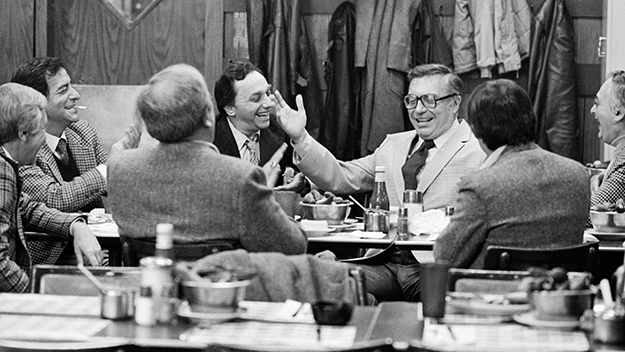
Broadway Danny Rose (Woody Allen, 1984)
On the opening-credit roll to Woody Allen’s Broadway Danny Rose (1984), the first card you see after the producers, title, and lead actors, is
Casting
Juliet Taylor
Taylor introduced the film at the 2019 TCM Classic Movie Festival, where she also presented Mike Nichols’s 1988 comedy Working Girl and was interviewed by TCM host Alicia Malone. Taylor holds a special love for Broadway Danny Rose even among the 40 movies she cast for Allen since Love and Death in 1975. She fondly recalled in a phone interview before the festival that Allen’s screenplay about an agent who tends to lose mainstream performers and ends up handling mostly specialty acts allowed her “to research many different areas. We had comics, lounge singers, novelty acts.” Also, because Danny (Allen) gets involved with crooner Nick Apollo Forte’s Mob-widow mistress (Mia Farrow), Taylor cast “a lot of Italians, and a ton of them real people. I think I loved it from the beginning. Nick had been singing at a Holiday Inn in Connecticut—and he had so much confidence! Woody knew Borscht Belt comedians and entertainers, and he had a handle on that world. Auditions were a riot. We had Gloria Parker playing the water glasses, bird acts, balloon acts. It was like going back in time. It was the end of the Catskill era, and we were talking to managers in Long Island and New Jersey who were still handling these performers. One agent, whose family was Italian, his uncle was an undertaker in New Jersey. A lot of the Italians in the wedding scene were real people. We went to social clubs in little Italy and asked if they’d want to be in a movie, and they said, ‘Yeah, we’ll be in it.’ The whole film was very sweet and full of life.”
Making sure expressive faces filled each nook and cranny of the screen was a hallmark of casting directors who came of age during the American movie renaissance of the ’60s and ’70s, when moviemakers in every genre created casts of characters, not just superheroes and villains. Taylor, 73, who did her first solo casting work on William Friedkin’s The Exorcist (1973), has a special affection for films that allow her to mix up-and-coming stars with Broadway stage actors and totally fresh faces, like the scientists and UFO zealots in Steven Spielberg’s Close Encounters of the Third Kind (1977) and the extraordinary child actors in Alan Parker’s Shoot the Moon (1982). Taylor also cast Spielberg’s Schindler’s List (1993), many other films for Parker, Mike Nichols (including The Birdcage, Primary Colors, and Angels in America), and Louis Malle, and a string of fascinating Stephen Frears productions, notably Dangerous Liaisons (1988) and The Grifters (1990).
Taylor earned her stripes working for casting pioneer Marion Dougherty when she was a New York maverick, operating out of a famously eccentric East 30th Street brownstone. Aspiring playwright/screenwriter Steve Tesich rented a room there while writing his first (and best) screenplay, Breaking Away (1979), blocking office traffic with his bicycle, and Bill Treusch Management had an office in the basement, which meant that talents like Carol Kane, Sissy Spacek, Christopher Walken, and Diane Keaton were also roaming the hallways. In her 50-year career, Taylor’s love for actors and knack for sensing their potential remained constant. Now retired, she still exults in theater and in movies that cross-breed theater and reality.
One of the few biographical facts out there about you is that you went to Miss Porter’s School and then to Smith. That’s not the usual path to show business half a century ago.
It was an unlikely trajectory. It’s actually interesting. Growing up in Greenwich, Connecticut, and going to Miss Porter’s, I didn’t know people who were heading into movies or the stage. Now people from all different backgrounds go to Ivy League schools intending to do all sorts of things in the arts. I always loved theater. When I was in grammar school, I thought maybe I’d be an actress. I didn’t know what other jobs there might be in theater. Somewhere along the line, I think in high school, I began to think I wouldn’t be that great at it. At an all-girl school like Miss Porter’s, in a school play, girls would do both men and women; I remember looking at another girl and thinking, “She’s really good.”
Miss Porter’s was always considered academically demanding. We spent all our time studying. We were ambitious in that way, but not many of us were projecting that into having a career. I went to Smith partly because it was one of the few schools that had a very good theater department—it was not just extracurricular. When I got there, I was too afraid to audition. I was afraid I was not that good, and I didn’t have the nerve—it wasn’t in my personality. But I still ended up majoring in theater. I had a wonderful advisor. My area was literature and criticism and I still was active in productions, pulling lights and doing a little teeny bit of directing. Smith was eye-opening because for the first time I met many ambitious girls, like a high-school valedictorian on a church scholarship from Montana, who’s now a professor at Harvard. My roommate became a surgeon. That was big. My mother was not a career person, but she was very invested in me being a career person. My dad agreed with her—he really wanted me to have the same opportunity as my brothers. He’d done some undergraduate dramatics. When I did plays he’d help me, reading lines. He was a lawyer. Funnily enough, the only person we knew who was close to the arts was [New York Times film critic] Bosley Crowther, who was a friend of my father’s; we’d see him now and then. And Smith did an amazing thing. They had a board of counselors for every department that wasn’t exclusively academic, whether it was for the museum in the art department, or the infirmary. To counsel us we had graduates who were both very learned people and were working in the theater. They ran these wonderful field trips, taking us to New York City for conferences and plays.
My senior year we attended a seminar after seeing the original production of Cabaret. [The producer-director] Hal Prince wasn’t there, but [the songwriters] Fred Ebb and John Kander were, along with set designer Boris Aronson. Shirley Rich, the casting director, had gotten her MFA at Smith—one of the few MFAs Smith offered was in theater. When she described what she did, I thought it was right up my alley, because I could be close to performance and not have to do it myself.
The fall after I graduated [1967] I banged around New York and ushered for a couple of theaters and I took a typing course, obligatory for women in those days. But back there in my mind was casting. A more recent grad had a job at the office of [legendary Broadway producer] David Merrick. She was being moved up, and she got me to interview for the job of receptionist at Merrick’s offices on the eighth floor of the St. James Theatre building, six days a week. Merrick had eight shows running when I was there. [Woody Allen’s] Don’t Drink the Water was one of them; Hello, Dolly! was downstairs in the St. James. I was really just receptionist and secretary for one of his partners.
One day, Linda Otto, who had been casting director for Merrick and for [Broadway producer] Alexander Cohen, came by Merrick’s office and chatted with everybody. She said, “I’m going to work for a film casting director and we need someone to be our secretary.” Though I’d only been with Merrick for six months, there was no upward mobility where I was, so I took the job. It was a very interesting time. Marion had done live television and had been very successful. Then she had gone off to do a big film, George Roy Hill’s Hawaii, and when she got back, movies were really happening in New York and she was the go-to person. Everyone was calling her, and she knew she had to set up a sit-down office. It had become prohibitively expensive to make movies in New York, but [Mayor] John Lindsay was changing all that. And United Artists, and then Orion, made it such a great period for filmmakers—I arrived at Marion’s when she was casting Midnight Cowboy! She and George Roy Hill were very close friends, and he was quite prolific then. There was always a picture of George’s that was just about to happen. And of course, in 1971 I met Woody Allen when he was doing Bananas. I was the casting assistant on that.
It was Marion, Linda Otto, and me in that brownstone. Nobody else was not in Midtown; everyone was in the theater district or on 57th Street. At first, directors were not keen to come down. But Marion was such an original thinker that she created an environment they all grew to love. It was homey and pretty, and Marion had a way of working that was uniquely her own. She made a huge contribution. In the past, casting directors called in hordes of people, all of the same type, for the same part. Marion was selective. She had strong opinions and she spoke out. Before Marion, casting directors used to be more like organizers.
In the early days with Marion, New York theater actors and Los Angeles movie actors were two different communities. When theater actors got movie parts, it was just the icing on the cake—we didn’t think they would leave New York and “go Hollywood.” There wasn’t much crossover, and there was none with London. We worked with a lot of directors from England and other European countries, but only when they were making movies in the United States. Another thing: British and American actors weren’t good at each other’s accents, as they are now.
Your very first solo credit was on The Exorcist. Was that intimidating?
It was terrifying. Here’s how it happened: Marion had done a lot of work for Norman Lear, and Norman had produced a film that Billy Friedkin directed, The Night They Raided Minsky’s. She and Billy didn’t get along. I always wondered whether Billy was hiring me as a jab at her: “I heard you had a really good assistant. Would you ever let her cast a movie for me?”
She was so generous, she just laughed and told me do it. She knew that he didn’t ask her because they didn’t get along, but Billy and I got along because I was so timid. Of course, I was so intimidated by the situation, I did everything but make him an English muffin for breakfast. But it was a really good experience, creatively. There are times when you have a chance to do something a little bit different, and it doesn’t always present itself in a bold way. Because theater was still a big thing for me, I was reading about Jason Miller, who wrote That Championship Season, and the article said he had gone to Catholic University and had been an actor. From his picture, this guy looked perfect. He’s a playwright, he’s got acting experience, and he has this brooding romantic quality. He read for the role of Father Karras and he got it. That was kind of fun. On the other hand, the search for the girl [Linda Blair] was hard; we put a huge amount of time into that. It was a safer time and we were able to get into every single school where we wanted to look. We had open calls and auditions with a gazillion children. Linda Blair had some professional experience: I think she had done a Gulden’s mustard commercial! I pushed for Kitty Wynn, and I certainly championed Max von Sydow, though I don’t recall whose idea it was to cast him.
Friedkin himself has written that he could be abrasive at that time, but he also seemed protective of the creative process.
That was another advantage of working in New York then. The directors were often really strong directors—Sidney Lumet, Woody, Mike Nichols. The studios didn’t want to mess with them.
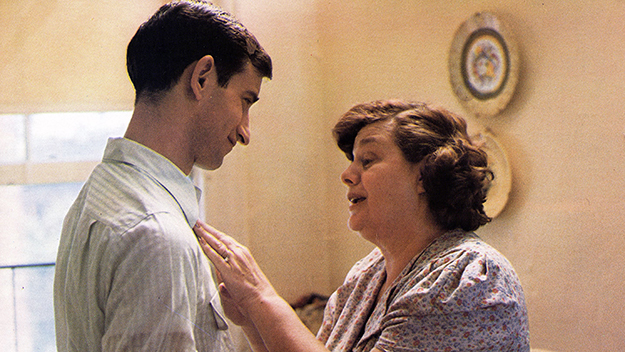
Lenny Baker and Shelley Winters in Next Stop, Greenwich Village (Paul Mazursky, 1976)
For the casting alone, Joan Micklin Silver’s movie about Boston’s alternative weeklies, Between the Lines, and Paul Mazursky’s autobiographical Next Stop, Greenwich Village must have been fascinating. The Mazursky film is also a masterpiece.
I thought that with the casts of those two films we could have put out The Player’s Guide to New York Theater. It was really fun. [Between the Lines had John Heard, Lindsay Crouse, Jeff Goldblum, Jill Eikenberry, and Lewis J. Stadlen, among many others, and Mazursky’s movie had Shelley Winters, Ellen Greene, Lois Smith, Christopher Walken, Lou Jacobi, Mike Kellin, and, again, Goldblum.]
I just have enormous affection for Next Stop, Greenwich Village. You know we had seen a lot of actors who were more well-known than Lenny Baker, who got the lead part. By the way, as a casting director, I never had two people in back-to-back for the same role. Too unsettling, even if they’d just hear each other auditioning through the door. We had every part covered except that one. But Lenny Baker was such a wonderful stage actor. And Christopher Walken definitely had a great reputation in the theater, too. Marion had cast him before—he worked with Lumet in a role that got a lot of attention in The Anderson Tapes. Again, a dynamite theater actor. My husband was a theatrical producer, and when we were hanging out together, he told Chris, “I saw you in Best Foot Forward in 1963.” Chris was in the ensemble with his brother, Glenn. They had been child actors. [Chris was originally billed under his birth name, Ronald, reportedly after Ronald Colman; his brother Kenneth was a child actor, too.]
When you and director Fred Zinnemann tangled over the casting of Vanessa Redgrave in the title role of Julia [1975], there was nothing specifically political about it, was there?
I don’t think he had ever met her. His feeling was that he was already working with Jane Fonda in the period when she was most politically active, and Redgrave was running for Parliament [as a Trotskyist], and he thought it would be too much for him to handle. I called the producer and told him this would be a mistake, and that made Fred angry with me, for going behind his back. But she was doing a play in town and finally Fred did meet with her and thought she was lovely.
I never felt personally slighted by him—he just had a slightly Germanic, formal quality. I didn’t feel I had the kind of juicy exchange I had with some other people.
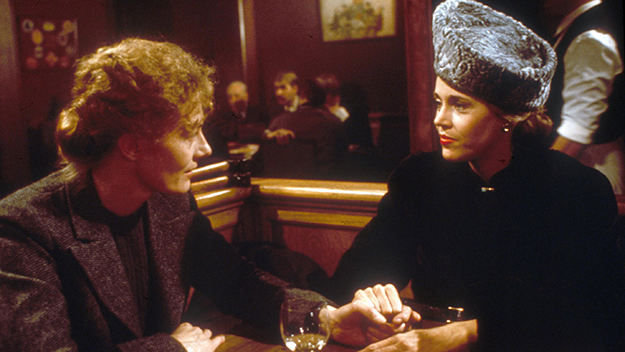
Vanessa Redgrave and Jane Fonda in Julia (Fred Zinnemann, 1977)
Could it have been that he came into the business when casting was a different kind of process?
I don’t know. Jack Clayton was one of my favorite directors, and Martin Ritt, too.
And they’re also wonderful directors. But Zinnemann was slightly older than they were, and he had experienced the studio system at its peak.
That’s a good point.
What about the coup of casting Meryl Streep in her first film role in Julia, as Lillian Hellman’s socially oblivious socialite “friend”?
She had arrived from the Yale School of Drama and done two off-Broadway shows and was a sensation from the moment she arrived in town. I thought I was just the lucky one. Everyone wanted to put her in movies.
What did you cast for Ritt?
I cast The Front for Marty, an adorable man. Woody Allen was already part of it [he played the title character]; I think he might have gotten me the job. It was a very important movie about the blacklist. Obviously, I knew about the blacklist, but I was just a little girl when it was happening. On that movie, Ritt had been blacklisted, and so had [screenwriter] Walter Bernstein. I remember bringing up an actor and Marty telling me, “My dear, he was a friendly witness.” I didn’t know what he was talking about. I was still in my twenties. It was quite an education.
Was it helpful to you to have a husband [James Walsh] who has been a theatrical producer and manager?
It helped in the sense that in addition to our separate professional lives we had a shared hobby. And still do! We just love to go to New York theater all the time and go to London and see the theater there. I’m still much more of a theater person than a film person. I did cast a few plays, including several for Nichols and one and a half for Louis Malle, and I did one musical Jim worked on. The real highlight, and the first thing I did by myself, was Hair. Marion got the call when Hair was being moved from downtown to Broadway. She had no interest, but for me it was so great. I cast a lot people who later were in Panic in Needle Park [1971]. One of the most fun things I ever did. We had an open call in the Village. People slept on the sidewalks, in tents. Jessica Harper came with her boyfriend from Wesleyan; she got into the show. The actors were on chorus contracts, so we held auditions every two weeks. Barry Manilow was the audition pianist. Vicki Sue Robinson [“Turn the Beat Around”] was in the show for six weeks.
How did Taxi Driver come to you?
Marty had worked with Marion on Alice Doesn’t Live Here Anymore. Robert De Niro and Harvey Keitel had already done Mean Streets, so it came with a lot of people attached. But I worked hard on it. Marty wanted to use Jodie Foster. But she was from California, where there were extremely strict child-labor practices, and Social Services weren’t sure they would let her do it, because of the nature of the material—they thought it was improper for her to be exposed to it. I spent a lot of time working that through.
What about the unconventional use of Albert Brooks and, in particular, Cybill Shepherd? Sue Mengers really pushed her to do the part.
I had worked as Marion’s assistant on The Last Picture Show, and I was involved in those discussions. And that casting really clicked. But I remember the casting of “real” people more from that one. Like [broadcast entertainment critic] Leonard Harris as the mayoral candidate. It was funny, if you had a national broadcast job, you’d be contractually forbidden from appearing in a movie, but if you were local, you could.
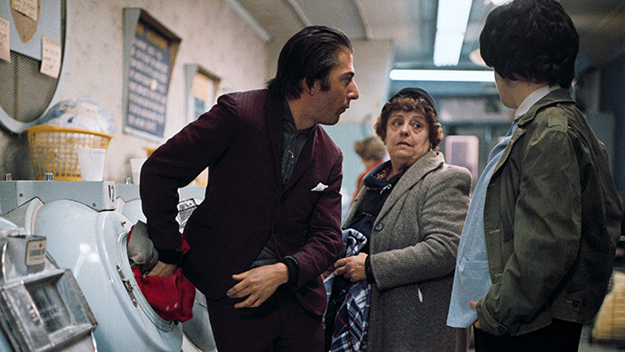
Midnight Cowboy (John Schlesinger, 1969)
You believe that someone in your job can change the nature of a film by a casting choice. You also like to emphasize that you don’t take credit for “discovering” actors, but you do champion them. One actor you championed was Roberts Blossom, who always brought something special to the table, whether he was playing “Papa Thermodyne” in Jonathan Demme’s Citizens Band or the farmer in Close Encounters of the Third Kind who sees UFOs—and Bigfoot, too.
Roberts Blossom was one of the people we always thought of to use in fun, different ways, because he was a very interesting, eccentric man, in keeping with the characters he brought to the screen. Talented but also kind of a hermit—not socialized in any normal way. You never knew what he would do. When we had him in for The Great Gatsby, he made an uncharacteristic effort to start a conversation with [the director], Jack Clayton—to do his job, to behave the way an actor should. And what he told him was, “I really liked Midnight Cowboy.” And Jack said: “I did, too.” Of course, Midnight Cowboy was directed by John Schlesinger. I found it so touching—he tried, but he got the wrong director. Still, he got the part. [He played Gatsby’s father, Gatz.]
Close Encounters of the Third Kind was a crazy movie to cast. There was nobody over the age of 30 in the room, except for Steven, who was probably 32, and I was same age as he was. Well, maybe [producer] Julia Phillips was a little bit older. But apart from Steven and me, everyone was stoned. It was really wild. Steven was so professional even then, when everyone around him was losing it.
Schindler’s List started as an amazing research project. Steven’s idea was, “Wouldn’t it be great if we cast actors who were all the same nationalities in the story?” I spent half a year looking all over the world for people from the right countries who could play the characters. There weren’t enough to fit exactly what we wanted. So we went the “mid-Atlantic” route, casting mostly people who spoke a good kind of English that was timeless and placeless. I suggested Ralph Fiennes—I knew him from the stage and from a film of Wuthering Heights. Liam Neeson I’d known for a long time; I had cast him as a priest for The Mission. Steven was also preparing and shooting Jurassic Park at the same time, so we did some work in person, some by tape. But it all worked out. He had an amazing line producer [Branko Lustig] who was a Holocaust survivor. He embodied the heart of the film and provided the glue for the production.
What about casting Albert Finney and Diane Keaton in Shoot the Moon?
Finney was one of my favorite actors ever, but Alan Parker might have brought him in, and I somehow think he had Keaton in, too. Alan is an incredible artistic guy, a wonderful drawer and painter, and he’s quit directing for painting. He’s a very visual person—and as a filmmaker, also, very visual. But Alan also appreciates what goes into good acting.
I definitely was involved in all the children. A lot of casting directors, if there’s a child to be found, they dole that assignment out to an assistant. It’s a lot of legwork, and it gets sort of tedious, going through masses of stuff. On this picture, the Los Angeles casting director, April Webster, did a lot of work searching for children in California. It’s kind of a miracle when good kids walk in—and yes, the process is intuitive, but I don’t think anyone can miss it. A child who will come in and be real and do what he or she is supposed to do believably, and not try to act—that’s a rarity. The problem is they try to act too much instead of using their natural instinct and sense of self and just letting go. It’s a rare thing. We see so many children before you find that. You know, their parents coach them. We say, “Don’t let anyone coach you; be yourself.”
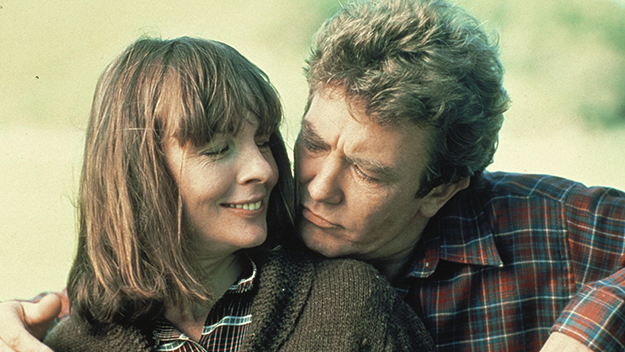
Shoot the Moon (Alan Parker, 1981)
What triggered the offbeat casting of Dangerous Liaisons?
It was really Stephen Frears’s brilliant moment when he said, “I don’t want it to be like Masterpiece Theatre. I want to blow that apart.” Such a brilliant idea. Using John Malkovich, such a great actor, but it was a strange way to go, and it turned out be thrilling. Glenn [Close] was wonderful, too. The marvelous thing about Michelle Pfeiffer is, she asked to read for us. Here you’ve got such a California actress, blonde, and she didn’t look at all like a period movie person—and she read for it and got it. And we had Uma Thurman come in—she was only 19, and brand-new. And she read wonderfully. I remember it so well. She was a New York girl, her dad was a professor at Columbia—and she was kind of dazzling. I don’t remember more specifics about Keanu Reeves. He was such a good actor! Think back: he was an up-and-comer. He was certainly not a conventional choice for a historical piece, but he gave it a lift, he gave it life. Frears set the tone and opened it right up.
Annette Bening was a great stage actress, so I brought her in for Dangerous Liaisons, and Frears loved her, but didn’t cast her. [The very next year she played Glenn Close’s role in Milos Forman’s version, Valmont.] He wanted to use her in a small part, but he couldn’t afford to bring her over to England and France. So when The Grifters came along, I told him, “This is the moment. She even looks like Gloria Grahame—she’s perfect for this kind of movie.” [Bening later played Grahame in 2017’s Film Stars Don’t Die in Liverpool.]
You cast Sydney Pollack in Husbands and Wives. He was such a wonderful actor.
Oh, he was great. When he came in to read the script, he read the whole thing out loud! But when it came to making The Interpreter, which I cast, he hadn’t directed for a long time. He said he was nervous and uncomfortable, anxious and worried. I don’t think he enjoyed the casting process. You know, a lot of actors who become directors are not comfortable in the casting process, and they can project discomfort onto actors. I think they find it embarrassing, because they identify with the actors so much. I worked on an unproduced movie that Paul Newman was going to direct, and he told me, “Having done it so many times in my life, I go through agonies seeing them do it.”
Paul Mazursky was a whole different package. He was so joyful. He loved casting; he would just have a grand old time. He was a huge amount of fun—a director who really knew how to make the actors feel comfortable. And Mike Nichols was such an actor’s director. It was really his thing; he directed so much theater so brilliantly. He loved the whole process. He cried during auditions. He had such an appreciation for good actors. He had one foot in Hollywood—he did appreciate the magic of the screen—but he was content to go back and forth and do both.
In later years, did you have to deal with producers who like to quantify how much an actor is worth according to their popularity with different age groups and in different countries?
I think I missed out on most of [the bad stuff]. It had a lot to do with the directors I worked with. Now, there’s so much “product” out there, it’s hard. So much stuff going on with Netflix and Amazon and Hulu. It used to be pretty upfront and honorable. Things were done on a handshake. Now you might ask an agent about an actor, and the actor is said to be “available,” but he or she might just be technically available. The agent simply wants to get the credit for bringing the offer to the actor. Today I think it’s hard to get a straight answer.
Michael Sragow is a contributing editor to Film Comment and writes its Deep Focus column. He is a member of the National Society of Film Critics and the Los Angeles Film Critics Association.







